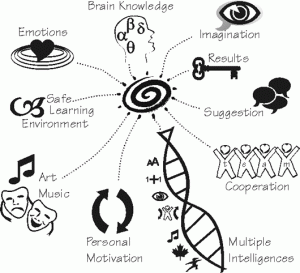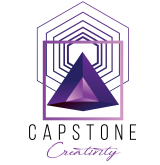I want to introduce you to something that I am a firm believer in. Something that some people may have heard of, others not. It’s a subject that you don’t really hear about in classrooms or academia in general. Actually, if I’m honest, only recently have I seen smaller establishments take on such practices when it comes to this area.
What am I talking about you ask?
I’m talking about accelerated learning. This can be a controversial topic for some because it hasn’t been put through the governmental stress tests (as far as I know) however is being trialled in a small number of institutions. There’s still some fear relating to publicly acknowledging and adopting this within the general structure of learning and the academic arena.
Personally, in my life, this has made a huge improvement in the area of learning and understanding what it takes for me to be an effective learner and on to a high performer. This included the area of art, science and technology, academia, management and others. In my student life I looked to accelerated learning to help me achieve my goals, as previously in formative years I would class myself as a ‘middle of the road’ student.
What is Accelerated Learning?
The University of North Eastern Illinois defines it as:
Combining adult learning theory and whole brain learning theory in the learning environment to achieve a faster learning rate.
To whet your appetite on this topic, have a look at YouTube regarding accelerated learning
The website at acceleratedlearning.com explains that We all have an individual learning style meaning a way of learning that best suits us. if we just used these techniques to match our way of learning, we would learn a lot more in a natural way.
Accelerated learning to me is a way of naturally utilising the whole brain’s natural ability in a holistic way to access, store and retrieve information as well as act on that information. I believe that some people including myself work from either left, right or a variation of the two hemispheres of the brain and I am ever trying to balance the two..
What are the different learning styles?
Howard Gardner has been attributed as bringing about the idea of Learning Styles and Multiple Intelligences – He developed this at Harvard University in 1983. The basic concept is that there are about 7 different ways in which one can display or demonstrate intelligence. Most People mention that there are about 7 of different styles for learning some you might find talk about 8. they are listed as:
Visual-spatial
This means that you are likely to learn more by the use of images, and spatial semantics
Aural-auditory
This means that you are likely to learn more by the use sound
Verbal-linguistic
This means that you are likely to learn more by the use speech and language

Physical-bodily-kinaesthetic
This means that you are likely to learn more by the use physical senses such as touching, use of body, hands etc.
Logical-mathematical
This means that you are likely to learn more by the use logic and reason.
Social-interpersonal
This means that you are likely to learn more by working in groups and inter-relating with them.
Solitary-intrapersonal
This means that you are likely to learn more by working alone.
Nature-naturalistic
This means that you are like to be more interested the natural environment around you like wildlife etc
Personally, I see myself as a cross between the spatial, auditory and kinaesthetic learning styles. I don’t know whether there is such a concept, but I use a lot of mind mapping techniques, audio tapes where i can and I also like to practically do things to help me integrate my learning.
I wonder though.. Is there a BEST learning style? Drop comment below and let us know!
